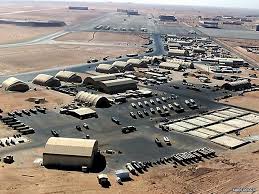U.S. publishes details of missile base Israel wanted kept secret

By Sheera Frenkel | McClatchy Foreign Staff
TEL AVIV, Israel — Israel’s military fumed Monday over the discovery that the U.S. government had revealed details of a top-secret Israeli military installation in published bid requests.
The Obama administration had promised to build Israel a state-of-the-art facility to house a new ballistic-missile defense system, the Arrow 3. As with all Defense Department projects, detailed specifications were made public so that contractors could bid on the $25 million project. The specifications included more than 1,000 pages of details on the facility, ranging from the heating and cooling systems to the thickness of the walls.
"If an enemy of Israel wanted to launch an attack against a facility, this would give him an easy how-to guide. This type of information is closely guarded and its release can jeopardize the entire facility," said an Israeli military official who commented on the publication of the proposal but declined to be named because he wasn’t authorized to discuss the facility. He declined to say whether plans for the facility have been altered as a result of the disclosure.
"This is more than worrying, it is shocking," he said.
Pentagon spokesman Lt. Col. Wesley Miller said he couldn’t comment on the specifics of the Arrow 3 base, but he said the United States routinely published the details of its construction plans on a federal business opportunities website so that contractors could estimate the costs of jobs. He said such postings often might be revised after contracts were approved.
Israeli officials appear to have been well aware of the danger of outsourcing building projects to the United States. In an interview with the Reuters news agency in March, Lt. Col. Peleg Zeevi, the head of the bidding process at Israel’s Defense Ministry, justified Israel’s long history of relying on the United States to help build military installations by saying that Israel needed "a player that has the knowledge, ability and experience."
"We are aware of the security issues that arise in deals with foreign firms, but because we want real competition and expertise, we will create conditions that will allow and encourage their participation," Zeevi said.
It appears, however, that Israeli officials were caught by surprise that details of the facility at Tel Shahar, classified so top secret that Israel’s military won’t officially confirm its location between Jerusalem and Ashdod, would be made so public.
Jane’s Defence Weekly first wrote about the bidding documents, citing them in a story in which it recounted details of the Arrow 3, a defense system designed to intercept ballistic missiles outside the Earth’s atmosphere that’s expected to become operational in 2015.
According to the bid requests, the Arrow 3 system will include six interceptors in vertical launch positions to be placed in the facility, and a gantry crane would need to be erected for further missiles. The structures encasing the interceptor system are to be constructed from high-grade concrete reinforced with steel mesh grids. They’ll have steel blast doors and a system to protect electrical wiring from the pressure created by a launch.
Israeli officials had announced that they were fast-tracking the Arrow 3 system because of their fear that Iran is developing a nuclear weapon.
“We want to reach a situation in which Israel has a ready defense for any threat, present or future,” said Col. Aviram Hasson, the head of the Defense Ministry department that’s charged with developing the system.
The Arrow 3 is capable of intercepting missiles at a range of up to 1,500 miles and can maneuver in midair to chase them. Last February, Israel conducted the first test of the Arrow 3 in space. That test was overseen by the United States.
The new facility won’t be the first military installation the U.S. government has built in Israel. Since 1998, when Israel and the Palestinian Authority signed the Wye River memorandum, the U.S. has constructed about $500 million in military facilities for the Israeli army. In addition to bases in southern Israel, including the Nevatim air base, the U.S. has built command centers, intelligence offices and underground hangars to protect Israel’s jet aircraft.
Last year, U.S. defense contractors began constructing an air force base just outside Tel Aviv – known as the "site 911" – that will cost up to $100 million. Israel’s military hasn’t revealed the purpose of the site, but it’s widely thought that Israel is trying to move some of its military headquarters from high-value real estate in Tel Aviv to the outskirts of the bustling city.
Read more here: http://www.mcclatchydc.com/2013/06/03/192895/us-publishes-details-of-missile.html#.Ua366pDn99B#storylink=cpy





